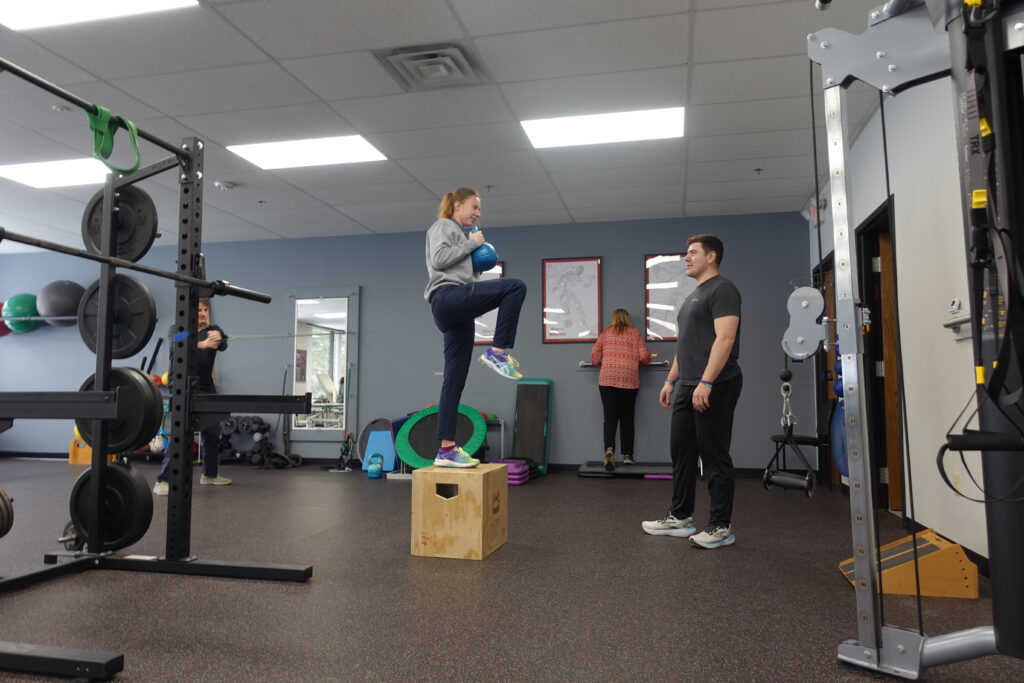5 Best Practices to Maximize Your Recovery (and Why They’re Vital to Your Fitness Routine)

Recovery is necessary in most aspects of our lives; we need breaks from computer screens, vacations from work, and time away from social obligations. Any athlete will tell you that one of the biggest keys to success in performance, whether for weightlifting, running, or fitness training, is giving your muscles and joints proper time to recover.
When it comes to training, many people often feel guilty about taking rest days, but these days are crucial for an effective fitness routine. The higher the intensity of your workout, the more time your body will need to recover.
Why is Recovery So Important?
Exercise creates two types of stress on your body: metabolic and mechanical.
Metabolic stress comes from depleting your energy stores (typically glycogen) while working out, while mechanical stress comes from damaging the muscle tissues. This damage is good because it forces the muscles to adapt and grow stronger.
It’s important to rest so that your body can replace its glycogen stores and fluids lost as well as repair the muscle proteins that were damaged during a workout. If you’re not letting yourself rest properly after a strength training workout, then you’re not letting your muscles fully grow and adapt to the stress you imposed on them. What a waste to not let your muscles fully adapt!
Working out again before you’ve had enough time to recover can often limit performance, which means decreasing benefits. For example, if you squat heavy one day, you’ll want to avoid using the same muscles the next day, at least at the same intensity, or you’ll continue to impose stress and damage to the muscles without allowing them to repair.
“Overtraining Syndrome” can also occur when not enough recovery time is taken. Overtraining Syndrome occurs when you ignore your body’s warning signs due to lack of recovery, such as sore muscles, lethargy or a noticeable decline in performance. If ignored, it can cause fatigue, sleep loss, weight gain, and depression, and of course puts you at a much higher risk for injury. Nobody wants to put in so much hard work just to get injured and be sidelined for days, weeks or even months!
Best Practices to Maximize Your Recovery
1. Sleep
Yes, the simplest way to recover is to sleep. No matter what other recovery methods you do, you won’t feel or be your best without enough of it. As mentioned earlier, our bodies need time to repair the muscle fibers that are damaged during a workout. While we sleep, our body releases Human Growth Hormone (HGH), which our bodies need to recover and grow, as well as restores Glycogen (energy).
So, not only do we need sleep to grow muscles and get stronger, but if we don’t get enough sleep, it can actually lead to muscle loss and poor performance. Don’t overlook sleep – it can’t be replaced by simply downing energy drinks or relying on fancy recovery tools!
2. Plan Your Training Appropriately

When you work out, do you have a plan, or do you just “wing it?” Do you try to lift as much weight or run as far and as fast as you can every workout? Do you train just your legs six times per week?
Working out without a short-term and long-term plan can be detrimental to your goals and progress. For example, you should switch up your routine’s intensity, making sure to follow up a high-intensity day with something lighter so your body has time to recover. If you’re weightlifting, you should also plan your workouts so that you’re not working the same body parts two days in a row. If you focus on your quadriceps on Monday, you should focus on something different on Tuesday, like chest. If you are putting in maximum effort for a certain muscle group, you should take at least 48 hours to let those muscles recover.
Many athletes and exercise professionals use a method called periodization training to improve results and prevent injury. Periodization training is an approach to fitness program design that focuses on maximizing training adaptions. This tactic helps to prevent overtraining by controlling specific variables, such as sets, reps, and load for a weightlifter, or distance, speed, and incline for a runner. For example, a runner training for a marathon may schedule a long distance run, shooting for or around their best time, and then set a shorter run at a slower pace the next day, followed by a rest day, before scheduling another long run. Changing these variables allows the runner to control their workout intensity to get stronger and maintain momentum without burning out.
If you’re working with an exercise professional, they will often have your training broken down by the periodization training model. Consider implementing a similar tactic in your own fitness routines.
3. Take Your Rest Days
Some people struggle with taking days off or scheduling time for lighter forms of activity. It can feel counterintuitive to take these days, but they’re more important than you think. You simply cannot sustain a fitness routine that requires high intensity activity every day; at some point, your body will become extremely fatigued, you won’t get the most out of your training, and might experience Overtraining Syndrome.
There’s no perfect way to structure rest days, but the more intense your training, the more rest days you’ll need. You should take at least one to two rest days a week, but you might need more – and that’s okay!
None of this means you have to sit at home and do nothing on your rest days (although you can if you want). If you’re the type of person who simply can’t sit still, we recommend taking an “active rest day,” in which you still do light cardio or stretching. If it’s nice out, the perfect rest day activity is a leisurely walk. Other ideas include light yoga/pilates, a low-intensity hike, or even setting aside time to play around with your kids or pets. Getting this movement in also helps to prevent lactic acid buildup, remove toxins, and boost circulation.
4. Stretching and Mobility

In general, you should include a warm-up that involves dynamic (mobile) stretches before each workout and a cool down with some static (immobile) stretches after each workout. It can also be helpful to complete a mobility routine or a yoga class on an active rest day. Stretching can help to relieve muscle soreness and tightness, increase flexibility, and increase blood flow, which can optimize your results in addition to just helping you feel better overall. There are so many benefits to stretching and so many tools that can help you out, like foam rollers, massage guns, and more. As we said earlier, these fancy tools are just that – tools! They’re not miracles and are not a replacement for real rest, but when used correctly they can take your recovery and performance to the next level.
To learn more about the different types of stretching and see some specific examples, check out this blog post from Meghan Blanusa, Naugatck PT.
5. The Science Behind Fueling our Bodies
Food is fuel, and we need to eat and drink properly to recover. Eating the right foods after a workout can help to restore glycogen stores (energy), prevent muscle breakdown and increase growth, and replace fluids lost during a workout.
Food can be broken down into three macronutrients: protein, carbohydrates (carbs), and fat. All three are important for post-workout recovery and should be included in the right mix. Protein contains amino acids which help to repair and rebuild muscle proteins. Carbs help to restore glycogen stores. If you completed an endurance work out, you will most likely need to consume more carbs than someone who completed a weightlifting workout. These are the two most important macronutrients to eat after a workout, but it’s okay to get some fats in as well.
After a workout, you might experience some dehydration as well, especially if you completed an endurance workout like running or swimming. Make sure to replenish the lost fluids with water or healthy drinks like tea. You might also want to add in a sports drink like Gatorade, which contains electrolytes, such as potassium and sodium, that help with recovery.
